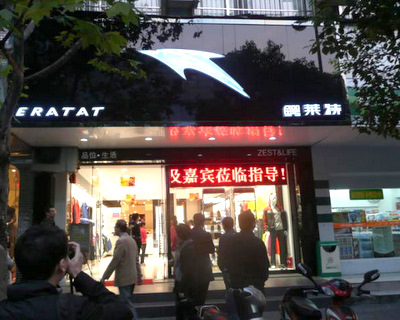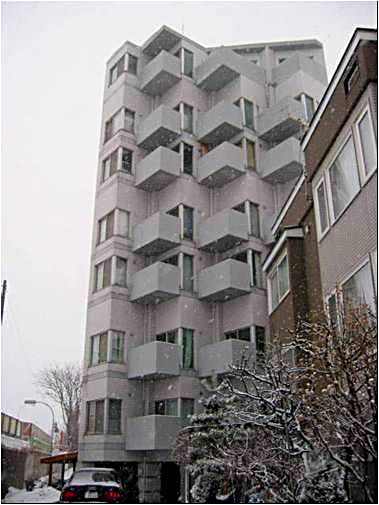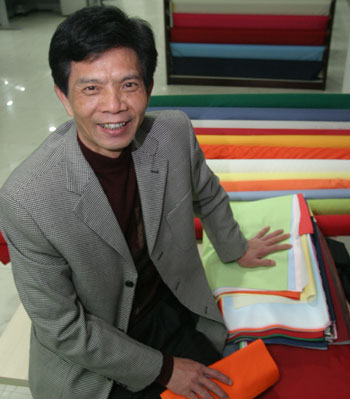>> This is Part 2 of our story on Brian Tan. Part 1: BRIAN R. TAN: Insights into an investor who is an asst professor
Q: What have you been doing of late in the market?

Right now, I’ve just started moving from a passive to a more active portfolio. Since all of my previous investments are paid for, I do have a strong base of investments. As such, my actions with respect to these investments are mainly to HOLD. Many of my investments give good dividends, and that has always been a part of my investment strategy – the ability to hold, which is in sync with my originally conceived passive portfolio.
I cannot move my passive portfolio to an active one so easily given the market conditions (I still want to time it as such that I can move the portfolio in a manner where I can still gain nicely). I am actually very happy with the current portfolio, except that I would want to change the weight-age of the stocks and rebalance some stocks. As such, I would be doing some minor selling and buying to accomplish this. Right now, it’s easier to buy than sell, so I’m buying some new stocks, with an intention to sell some older stocks later on.
I’ve also just opened up a margin account (not CFD because you do not have ownership of stocks using a CFD account), where I do own the stocks I buy on margin. This is an important safeguard when dealing with small cap stocks.
If your stocks get suspended, a lack of ownership can be extremely troubling and you might get stuck with very high interest payments (if using CFD, this could be like 50% interest payment a year, or even more, depending on the broker you use). Either way, since all of my stocks are now paid for, I have some room to use this approach as a tool to rebalance my portfolio and move it towards an active portfolio.
In summary, I am mainly holding my current portfolio, with some buying to rebalance my portfolio and to move it towards an active portfolio. I intend to keep the base portfolio on hold mode for a bit, and the trading portion on buy mode, with a potential sell if the market improves.
Q: Dangerous question: When do you think the Singapore market will bottom and start to recover?
I try not to have a firm viewpoint on such events because I believe it detracts from fundamental analysis and leans towards speculative investment. Personally, I think things could go either way. With such a perspective, figuring out a bottom is quite meaningless to me. What’s more important is how I would structure my investment decisions such that I can win from both situations. Changing one perspective to include a portfolio that can withstand the stand of time (dividends, strong fundamental companies, etc), or having a mix of stocks with different reactions to the market will be what I’ll be focusing on to deal with bottoms, etc.
Besides, even if my stock portfolio falls, there are still other ways to benefit in an uncertain, volatile market when using a broader wealth management approach.
Q: What are your five key holdings and what percentage do they collectively represent in your portfolio?
I’d rather reveal which are the 5 holdings I like best and why . My 5 key holdings are not necessarily my top 5 picks . Disclosing percentages is somewhat sensitive. However, I will be honest about my 5 top picks (which I own in a significant manner) and why I like them and believe they will move.
-
Saizen REIT (Analysis based on a 14.5 cent price)– This is a Japan REIT with a very stable business and good distributions. Saizen has a low leverage and is getting new loans to increase DPU, without the need for dilution. It went through a default recently that was really a non issue given their low leverage. What was good was that they sold off some assets to repay the loan and that gave an accurate reading on the value of their assets, so I trust their asset base. Their asset base is very much higher than share price, so it’s highly undervalued. Also there are no issues with parent companies (unlike instances such as K REIT). I would classify this as one of my core stocks with very good distributions and downside protection.
 A property of Saizen REIT in Japan
A property of Saizen REIT in Japan - Eratat Lifestyle (Analysis based on a 12 cent price)– Relatively new company with good grades for Corporate Governance. Management seems very pro-active and good at communicating the firm’s strategy and actions. I find that what’s being said and what’s being observed from physical store openings, their fashion show, their financial statements, etc are in sync and congruent. Highly undervalued company and I believe it will give very good capital returns sometime in the future. If not, they still give good dividends and I can always add it to my core stocks. In addition, Eratat has a good story. Basically, Eratat has very strong upside potential over time and very limited downside, with a reasonable dividend stream.
-
Foreland Fabrictech (Analysis based on a 10 cent price)– I’m new to this stock but like it quite a bit. The company has been around for some time now, and management has made some very good calls over the last few years. They took a sacrificial hit for long term sustainability, which I like. Earnings are up and it looks like it can be sustained ( my analysis is not fully complete yet). They pay dividends too, and they’re also highly undervalued at the moment. They’ve shown a competitive advantage with their products and being a cost leader, I think they have much to gain. I believe Foreland has very strong upside potential and limited downside. Like Eratat, they also have a decent dividend policy.
 Tsoi Kin Chit, chairman, Foreland
Tsoi Kin Chit, chairman, Foreland - EU Networks (Analysis based on a 1.5 cent price)– This is a rather risky choice... but I’m really going with my read on this. The fundamentals are ok, with EU Networks having an asset base that is close to its stock price. In addition, the share float is extremely large. Yet, I think it’s a very interesting play. Fundamentally, their business model is a good one and they own the actual hardware (top of the line infrastructure obtained when there was a management buy-out of the old company that went bust. They got it for a steal). They’re still making losses but now, it’s mainly because of depreciation. They’ve managed to scale up the business well and I believe that they would be profitable very soon. More importantly, their assets should be worth a lot more than what’s on the books and their revenue potential is great. Might have to wait a bit. I think they’ll move very strongly before 2013, when their convertible bonds end. I’m expecting big things, but be careful that some of the majority stakeholders might want to capture returns at the expense of minority shareholders. Fortunately, the best way for the company to reap benefits now is to increase the share price based on the good business development they’re doing. I would classify EUNetworks as a stock with limited downside when seen from an industry and structural (as opposed to financial and accounting) perspective. There’s good institutional support and with great upside potential in the long run. They do not currently have a dividend policy that I know of.
- China International Holdings (Analysis based on a 4 cent price)– A quiet stock generally, with an asset base that is way higher than its current share price and it has been quietly earning profits over time. They’ve had a good dividend policy and their cash numbers can be tracked because they mainly deal with provincial governments, etc. As such, there’s a lot less chance for fraud. Right now, they’re going into oil exploration in Papua New Guinea and other natural resources. As in the past, they seem to be approaching this new venture in a carefully thought about manner. Even if you don’t consider their new foray, they’re highly under-valued. If their venture into oil works out, that would likely draw attention to the company and the stock could run. I believe China International to be a good core portfolio stock, with good long run potential and limited downside.They also have a good, stable dividend policy.
Q: Some history about yourself as an investor: When did you start investing and what led you to it?
I started investing in 1999 when I thought the market was just too cheap and I went in because it was too good an opportunity to miss out. I didn’t have much money then, but sunk in what I had into the market, and never looked back. .
Q: How different is your investment approach now compared with when you started putting money in stocks 10 years ago?
Not very different actually. All of the basics are still there. I’ve developed some new modules and have fine tuned my older modules and level of understanding. I’ve also added new information inputs and sources to facilitate decision making. Other than that, my investment approach hasn’t changed much. I did go into technical analysis for a period but that was short as I realized that fundamentals work best for me and my portfolio.
Q: What were the stocks that you made big gains on?

Well, I’ve actually realized my largest gains on Z-Obee, Asia Dekor and Armarda.
Z-Obee had a very strong “moving up the value chain” story. I got in at various entry points, the lowest being at about 2 cents. Using a psychological module, I over-weighted on the stock (although I was low on cash at that moment, so the over-weight was still much less than I had wished) and managed to sell off most of it at my fundamental target price of about 9 cents. This enabled me to change my mindset from being a value, conservative investor, to that of a more speculative investor. As such, I managed to get more than 1000% returns on a portion of my investment, clearing some lots at 26.5cents. (I only wished it wasn’t such a small absolute base – at 2 cents, liquidity was tight).
Asia Dekor was interesting. They had a good “turn-around” story. I heard about it and started to analyze their books. They were previously making losses and were now somewhat profitable. Looking at the various ratios, statements made, etc, I could see the logic of their actions. As such, I got in with an overweight position too. This time, it was because I had a different short term and long term perspective for the share. I cannot recall the % gain, but it was nice (nowhere close to Z-Obee’s >1000% though). I had expected a much larger long term gain, but the long term gain proved to be only slightly more than the short term gain. However, the market was bad at that time, and so I was more than happy to get the returns for re-investment.

Armarda was basically just an under-valued stock play. No real story. In fact, I didn’t really buy into their business model. Given my passive portfolio, one of the things I did was to accumulate a bunch of highly undervalued stocks that had downside protection. If even one of them ran per year, the gain on that might be in the hundreds of percent. Armarda was one of those. I got in at about 4.5-5 cents and got out at 13.5 to 14.5 cents. Their fundamentals were much better than they are now, which is why I never went back in after their price came down.
Q: And the stocks that you lost big-time on?
I would probably say Westech. They had good fundamentals and a good business position. However, one of their customers went bankrupt and despite having insurance, the % covered was much less than the amount of money that one customer had owed them. It didn’t bankrupt the company, but it made an incredibly significant impact. A good thing the company had good fundamentals before that... otherwise my entire investment would have gone up in smoke. I believe I lost slightly less than 50% of my investment, although I did collect decent dividends while I held on to Westech.
Q: Let’s talk a bit about lifestyle: I guess you would be what is termed a high net-worth investor. Is yours a glittering lifestyle?
I don’t consider myself a high net worth individual (not yet anyway) because I haven’t really been in the game to make it really big... at least till now (which is why I’m moving from a passive to active approach). I believe I’m now ready and willing to make larger but conservatively structured bets given that I’ve built up a reasonable base.
I don’t think mine’s a glittering lifestyle at all. I like value and good decisions. A glittering lifestyle is often wasteful and inconsequential. Take for example someone who actually pays a tidy sum of money to drink coffee laced with gold flakes (yes, some people do that). What do you really gain from that? A fleeting sense of self that one craves because one doesn’t have a strong enough sense of self to begin with? Either way, it’s there one second and gone another. .. and have no real meaning in the broader scheme of things.
I’m not against materialism per se. We live in a material world. It’s fact. It’s reality. However, we’re also human beings and a speck that’s not really worth much in the grand scheme of things. As such, I believe my lifestyle is more down to earth and the only thing I’ve splurged so far has been my car, and even then it has to be something that makes sense. While I love Ferraris, I would never buy one even if money is not an issue. At most, I’ll settle for a Maserati (hahaha). It looks as good but it’s definitely cheaper and hence more value oriented.
Then again, I probably just settle for something whose look I like as much but is much cheaper, like the RX-8, which incidentally was what i splurged on. I even seriously considered getting a COE car (i.e. a car that’s more than 10 years old) because it would have been my first vehicle in Singapore.
My lifestyle is probably influenced by the Buddhist concept of Balance which I think is a wonderful one and that is something I strive towards (FYI – I’m not Buddhist but it doesn’t mean I can’t appreciate Buddhism). Put together with some of teachings from the scriptures, and it’s a pretty good way to build up one’s lifestyle, in my opinion =)
Recent stories:
ERATAT: Why the renovation subsidies, the lower-than-expected cash balance, etc
WORLD PRECISION MACHINERY, FORELAND, OUE: Latest happenings
INSIDER BUYING during Japanese fallout Mon-Tues
ARMARDA acquires 45% stake in China Mobile Satellite Communication Group








Any update on CIH regarding the mining and oil business?
I try to find information on google and SGX website, but to no avail.
Regards,
Lukas
Thanks for your insight especially on amalgamating trades. Looking forward to your other inspiring idea like the article above..=D
Thanks,
Lukas
(and Vivio) - Yes, you can use a broker like Stanchart, with all of the related issues that Vivio had mentioned.
I don't have an answer to your question because it's a cost component that is outside the locus of control for us as retail investors.
However, I believe you should look at it from a holistic perspective and not be overly concerned about paying 1% for brokerage for acquiring 50 lots at 5 cents. A minimum increase of share price of 0.1 cents would already mean that the stock has appreciated 2% and would have covered your transaction cost for purchase.
One thing you should take note is that small caps tend to lack liquidity in times of economic distress and bid/ask spreads can be quite large too. They tend to move very quickly when liquidity returns and the market playts such counters. I think that if you are able to get 50 to 60 lots per trade, you're already doing an excellent job.
Do remember to consolidtae (amalgamate) your daily trades in order to reduce transaction costs.
Philips is exactly the broker i am using now. Problem is they have minimum charge which is 25 dollar.
The stock i want to buy is around 5 cents, and they only have the sell size at 50 lots or 60 lots or less, sometimes which only amounted to lets say 50 lots at SGD 2500 and i have to pay the commission for SGD 25 which is one percent..(thats huge)
And when you sell, you have to sell thru StanChart. I prefer Phillips, can earn when the shares are lent out to whoever. At StanChart, I believe they lend out shares but you aren't going to earn on the loan.
Would you mind to share technically how to collect small caps S-shares with low volume, since my online broker charge a minimum amount commission. Hence, it is not feasible to execute several small transactions on the low liquidity caps with min commission applied.
Do u have any recommendation on which broker that does not apply any minimum commission and only based by percentage?
Thanks,
Lukas
Naturally, I've provided a substantial discount. I doubt any rationale investor will agree that some of these stocks have been discounted terribly already. A greater discount now only presents one with opportunity. After all, to make, one condition is to be able to buy low. Variance is your friend. You just have to be patient enough to let it work for you instead of against you... and choose good stocks that will allow you to wait it out.
(gangho) Yep. EUN also just put a presentation up recently on SGX. Seems like they're doing their marketing of their progress now.